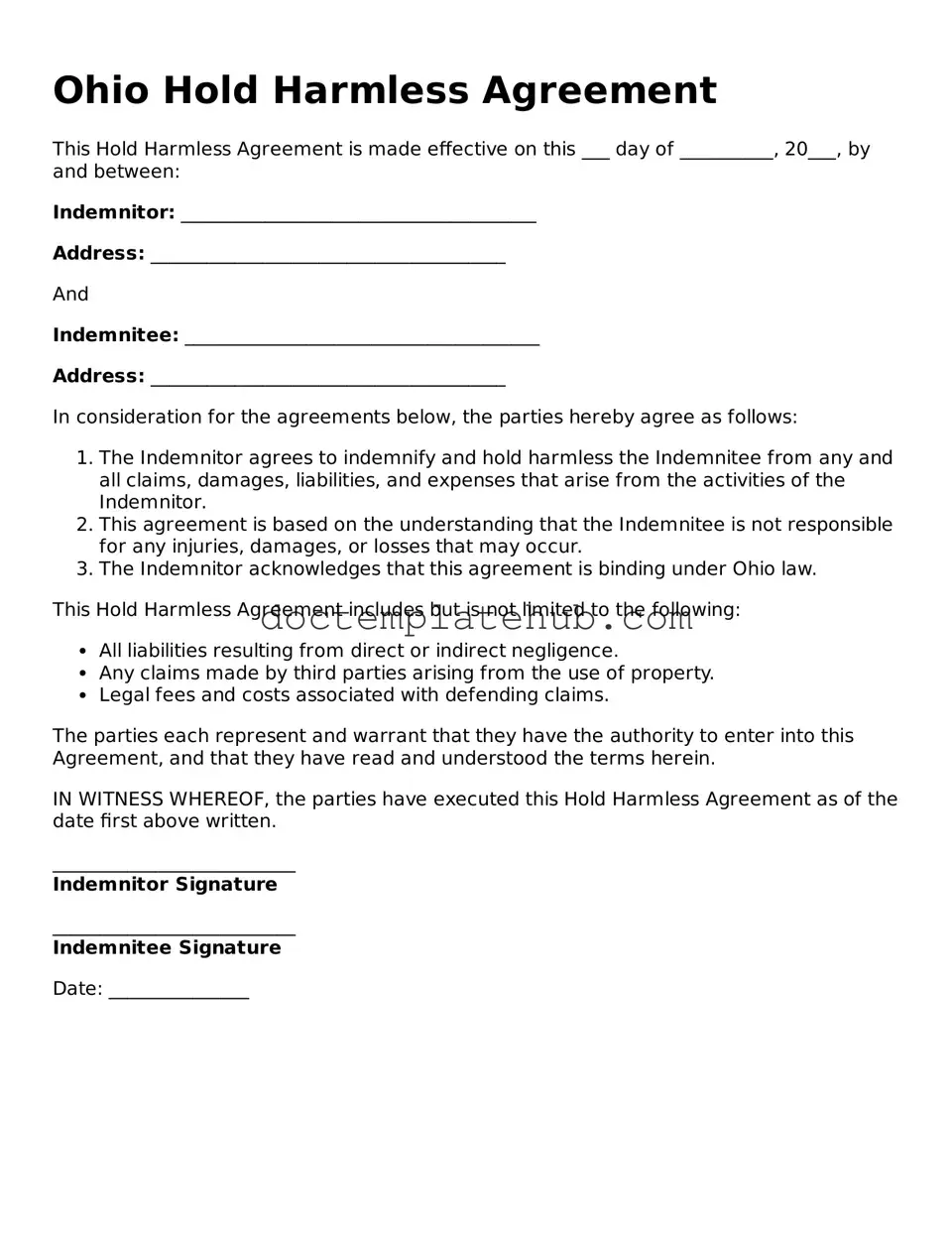What is a Hold Harmless Agreement in Ohio?
A Hold Harmless Agreement is a legal document that protects one party from liability for any damages or injuries that may occur during a specific activity or event. In Ohio, these agreements are often used in various contexts, such as in rental agreements, construction contracts, or event planning. By signing this agreement, one party agrees not to hold the other party responsible for certain risks or damages that may arise during the course of the activity.
Who typically uses a Hold Harmless Agreement?
Various individuals and organizations use Hold Harmless Agreements. Common users include landlords, contractors, event organizers, and businesses that provide services. For example, a landlord may require a tenant to sign this agreement to limit liability for injuries that occur on the property. Similarly, a contractor may ask subcontractors to sign a Hold Harmless Agreement to protect against claims related to their work.
What are the key components of a Hold Harmless Agreement?
A typical Hold Harmless Agreement includes several important elements. It usually identifies the parties involved, outlines the specific activities covered, and clarifies the extent of liability protection. The agreement may also specify any limitations or exceptions to the protection offered. Clear language is essential to ensure that both parties understand their rights and responsibilities.
Is a Hold Harmless Agreement legally binding in Ohio?
Yes, a Hold Harmless Agreement can be legally binding in Ohio, provided it meets certain criteria. The agreement must be clear and unambiguous, with both parties voluntarily agreeing to its terms. It is also important that the agreement does not violate public policy or statutory law. If these conditions are met, the agreement is likely to be enforceable in a court of law.
Can a Hold Harmless Agreement protect against all types of liability?
No, a Hold Harmless Agreement does not provide blanket protection against all types of liability. In Ohio, the enforceability of such agreements can be limited, particularly in cases involving gross negligence or willful misconduct. Courts may not uphold an agreement if it attempts to waive liability for actions that are considered reckless or harmful. Therefore, it is essential to understand the scope of the agreement and its limitations.
Do I need a lawyer to draft a Hold Harmless Agreement?
While it is possible to create a Hold Harmless Agreement without legal assistance, consulting a lawyer is often advisable. A legal professional can help ensure that the agreement is properly drafted, compliant with Ohio law, and tailored to the specific needs of the parties involved. This can prevent misunderstandings and potential disputes in the future.
What should I do if I am asked to sign a Hold Harmless Agreement?
If you are asked to sign a Hold Harmless Agreement, it is important to read the document carefully. Take the time to understand the terms and the potential risks involved. If you have any questions or concerns, consider discussing them with the other party or seeking legal advice. Signing the agreement means you are accepting the terms, so it is crucial to be fully informed before proceeding.
